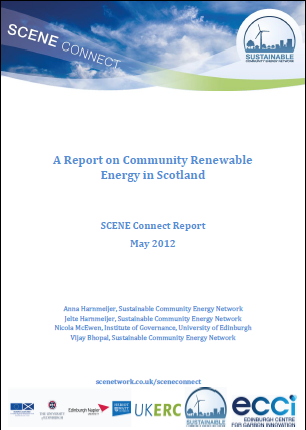Introduction to Combined Heat and Power
Back to Technology Guidance Home
Introduction to Combined Heat and Power
Combined Heat and Power (CHP) or ‘Cogeneration’, is the simultaneous production of electricity and heat from the same fuel source, integrating the production of usable heat and power in one single, highly efficient process.
Whilst CHP is fundamentally an energy efficiency technology, it provides a means to substantially reduce primary energy consumption without compromising the quality and reliability of the energy supply to consumers. Consequently, CHP provides a cost-effective means of generating low-carbon or renewable energy.
As with conventional methods of electricity production, CHP systems burn fuel in an engine to create electricity. However, where valuable heat energy from conventional electricity generation is discarded, CHP systems capture it for space, water or process heating. Heat from a CHP plant can also be used to generate cooling by using an absorption chiller unit. This process is konown as ‘tri-generation’.
CHP systems are typically fuelled by natural gas; however, they may also be powered by renewable sources such as waste gas or biomass, providing further opportunity to reduce costs and CO2e emissions.
A Typical CHP System – Turbine or Engine with Heat Recovery Unit

(Source: U.S. EPA)
Where Can CHP be Used?
CHP can be considered at any site where there is sufficient heat (or cooling) demand – particularly if that demand is for extended periods. The greater the demand for heat or cooling, the higher the cost savings that a CHP system can provide. As a general rule, a CHP system will require a heat load of at least 4,500 hours a year to remain viable. CHP is therefore particularly suitable for the industrial, public and commercial sectors.
The best time to consider installing CHP is at the design stage for a new installation or building, as it can be fully integrated into the design specifications. However, it can also be successfully retrofitted into existing sites, particularly if you are upgrading energy plant equipment (such as a boiler) that could feasibly be replaced by CHP.
CHP Profile
There are 1,438 CHP schemes in operation in the UK. Of these, 328 are in the industrial sectors and 1,110 are in commercial, public administration, residential, transport and agriculture sectors.
Advantages
- A Proven, Reliable Technology - CHP systems are based predominantly upon existing, proven power generation technologies: steam turbines, gas turbines and reciprocating engines which are already widely used. The use and adaptation of existing technology not only contributes to the relatively low cost of CHP, but also ensures that it is a proven, reliable technology.
- Improved Efficiency - By using a single fuel source to produce multiple useful forms of energy (e.g. heat and electricity), cogeneration systems significantly increase thermal efficiencies, reducing fuel requirements. While conventional power plants reach thermal efficiencies of approximately 30 to 40 per cent, the overall efficiency of cogeneration plants can reach in excess of 80 per cent at the point of use.
- Reduced Energy Costs - As CHP systems generally meet local heat, energy and increasingly cooling needs, they can result in reductions of up to 30% in energy bills. In many cases, excess energy produced by CHP systems can also be sold on to a third party.
- Reduced CO2e Emissions - By using natural or waste gas as opposed to coal, CHP reduces CO2e emissions intensity per unit of energy produced.
- A Secure Energy Source - As an on-site energy generator, a CHP system can ensure the provision of electricity and heat even when the electricity grid fails.
-
Disadvantages
- Capital investment is required - Depending on the size of the system, capital and installation costs for CHP are generally higher than for conventional plant equipment such as boilers.
- Payback Times – Payback times for CHP are still quite high, between 7-15 years depending on use and if the system can export electricity to the national grid.
- Not completely Renewable – Most CHP systems are reliant on fuels such as natural gas. However there are systems on the market which utilise renewable sources such as biomass.
- Seasonal Variations – Some CHP systems may be ineffectual in responding to dynamic requirements of users, particularly coping with seasonal variations; producing excess heat during the summer period, for example.
-
Technical Guidance
Back to Technology Guidance Home



